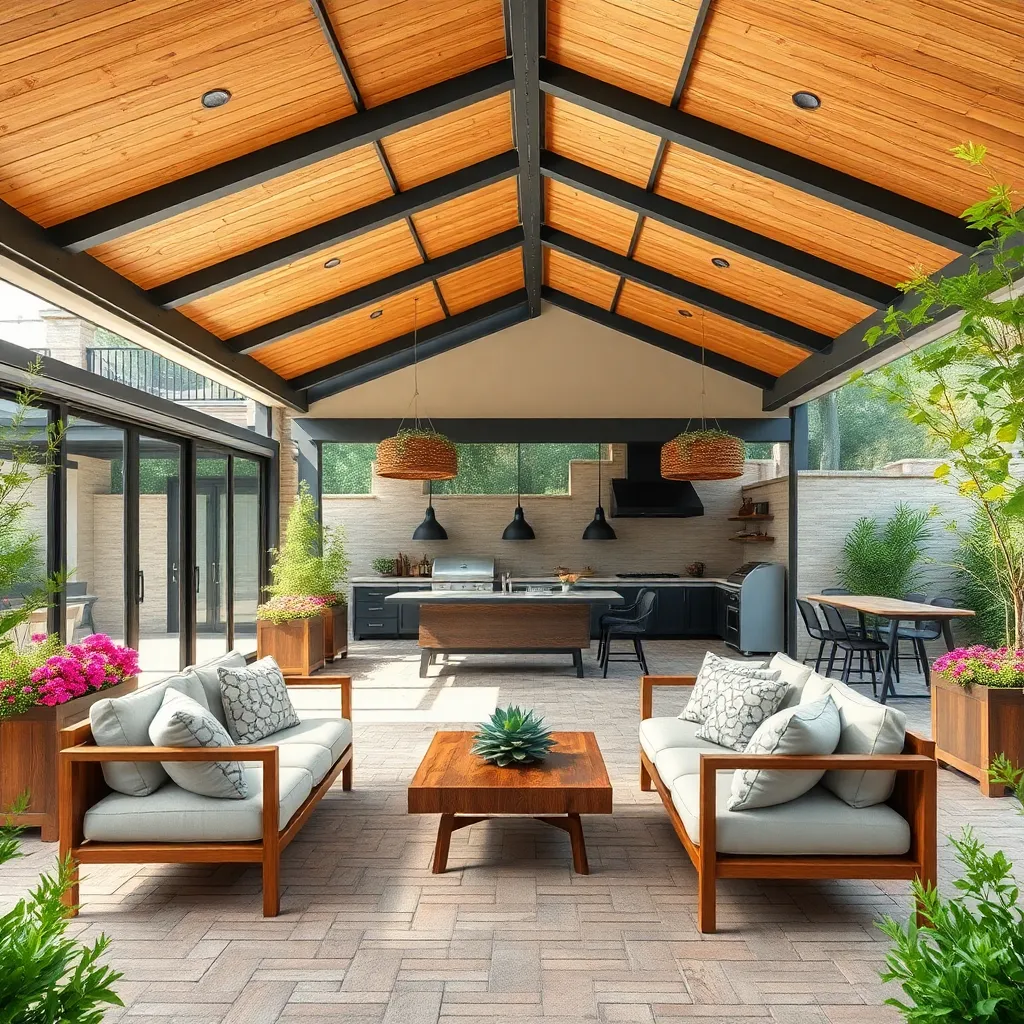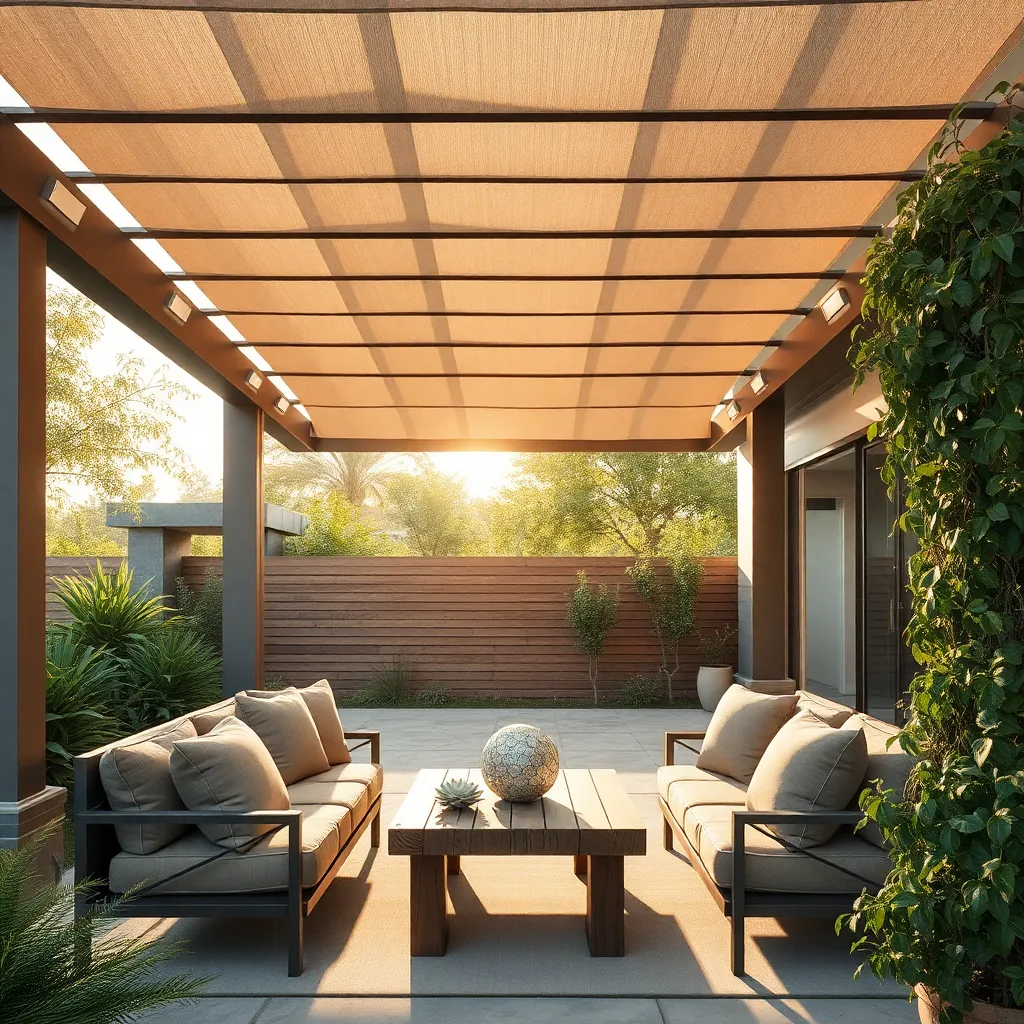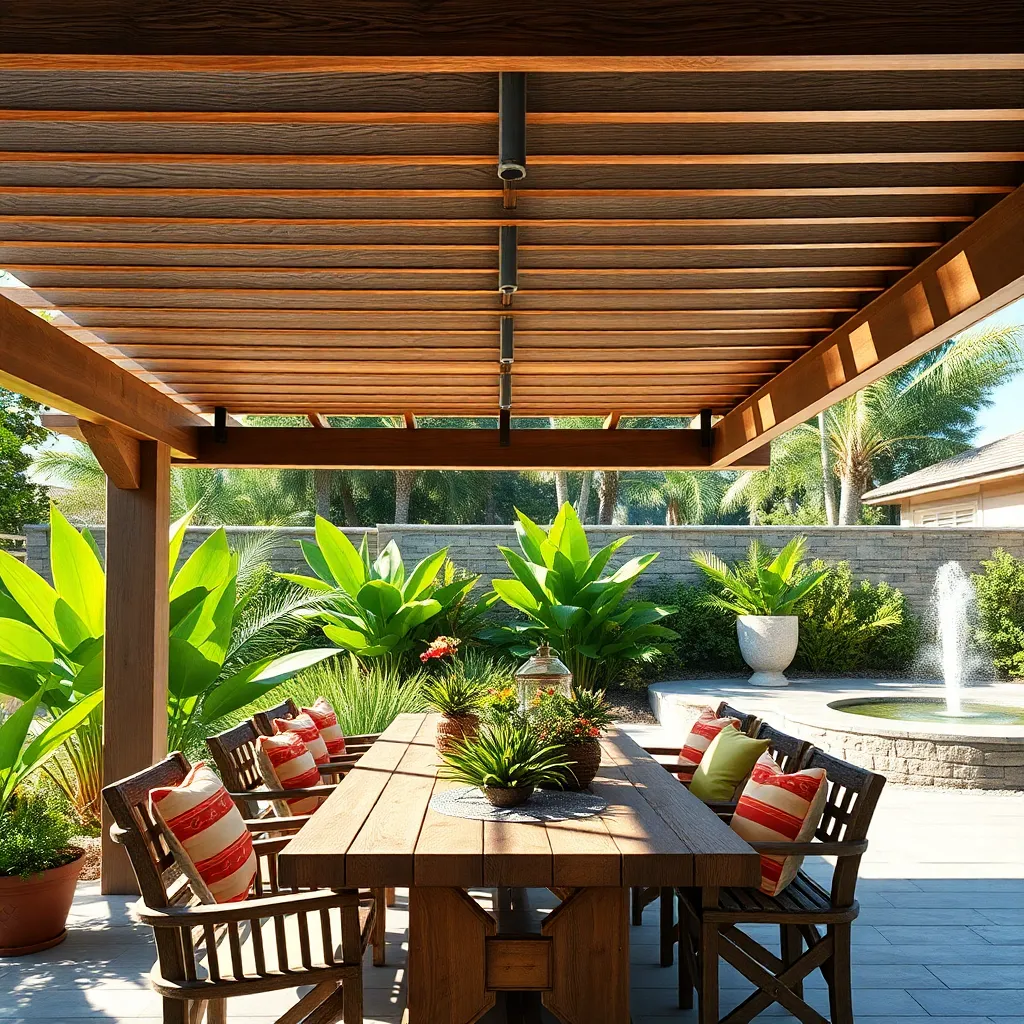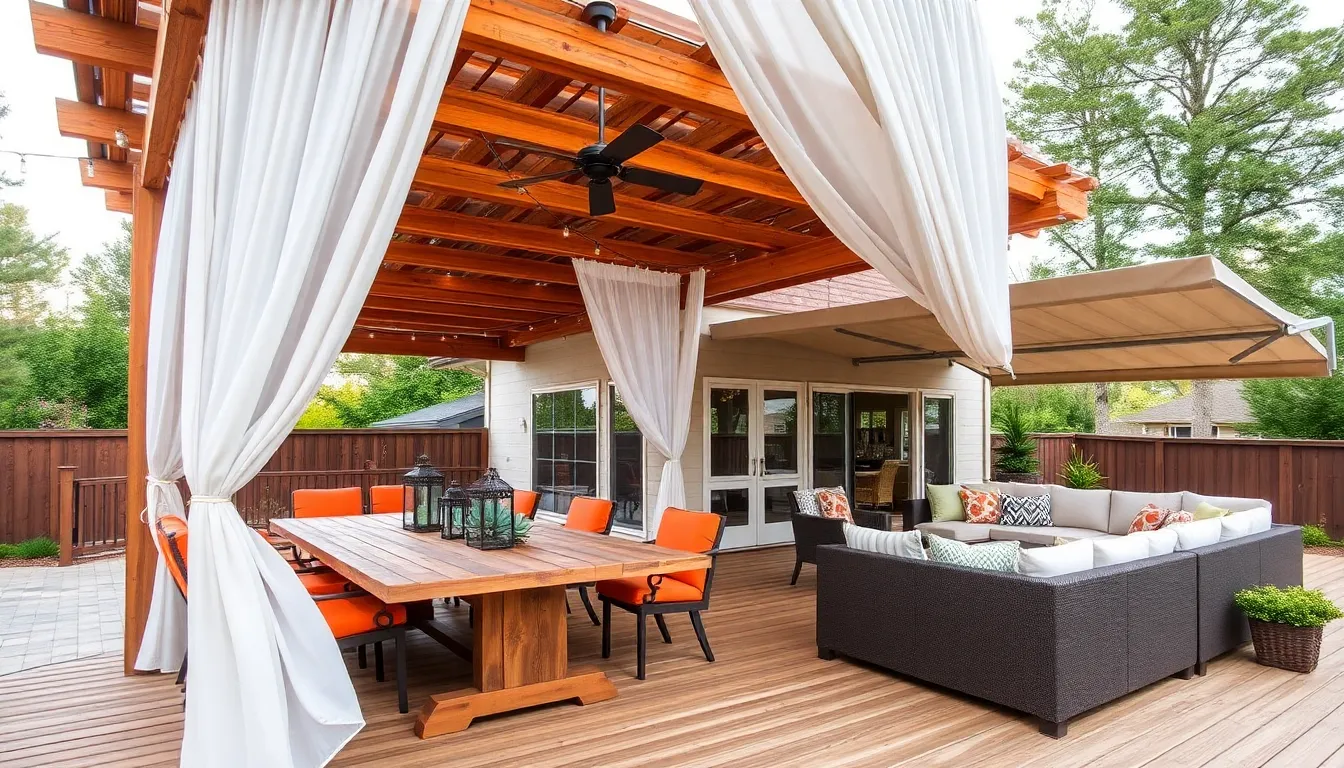Transforming your outdoor space begins with selecting the perfect patio cover, a pivotal step that not only enhances your home’s aesthetic but also increases functionality. Whether you’re a beginner dreaming of your first outdoor oasis or a seasoned homeowner looking to upgrade, choosing the right cover can provide the perfect blend of shade, style, and comfort.
In this guide, we’ll walk you through key considerations like material durability, design options, and climate considerations to help you make an informed choice. You’ll discover how to align your patio cover with your lifestyle needs and design preferences, ensuring that your outdoor space becomes a cherished extension of your home.
Assess Patio Space and Needs

To effectively choose a patio cover, start by assessing your patio space and identifying your needs. Measure the area you plan to cover, considering both the width and length, to ensure you select a cover that fits perfectly. Consider the climate and sun exposure in your area, as this will influence materials and design; for instance, aluminum and vinyl are great for hot regions due to their durability and heat resistance, while wood might be preferable in cooler climates for its aesthetic warmth.
Think about how you plan to use your patio, whether for dining, lounging, or entertaining, as this will dictate the style and features of your cover. Opt for adjustable or retractable covers if flexibility is important, allowing you to adapt to weather changes. For a sophisticated touch, incorporate elements like integrated lighting or a ceiling fan to enhance functionality and comfort. By aligning your cover choice with your space and lifestyle, you’ll create a practical and inviting outdoor area.
Identify Preferred Cover Materials

Choosing the right cover material for your patio involves balancing durability, aesthetics, and maintenance. Aluminum is a popular choice due to its lightweight nature, rust resistance, and variety of color options, making it both practical and stylish. For those seeking a more natural look, consider wood, such as cedar or redwood, which offers warmth and charm but requires regular sealing to prevent weather damage.
For homeowners looking to integrate modern materials, polycarbonate panels provide a sleek, contemporary feel and offer excellent UV protection while allowing natural light to filter through. If you prefer a more traditional approach, fabric canopies are versatile and cost-effective, with options to retract for adjustable sun exposure. Whatever material you choose, ensure it complements your home’s architecture and suits your climate for long-term satisfaction.
Consider Climate and Weather Factors

When selecting a patio cover, it’s essential to consider your local climate and weather patterns. In regions with heavy rainfall, opt for materials like polycarbonate panels or metal roofing, which offer excellent water resistance. For areas with hot, sunny climates, consider installing a cover that provides UV protection, such as retractable fabric awnings or pergolas with adjustable louvers. Ensure the materials you choose can withstand local weather conditions to maximize the longevity and functionality of your patio cover.
Advanced homeowners might explore integrated designs that account for seasonal variations, such as combining solid and open structures. For instance, a patio cover that includes both a solid roof section and a pergola-style lattice can offer flexibility, providing both shade and sunlight as needed. Consider the direction of prevailing winds and sun paths when positioning your patio cover, as this will enhance its effectiveness and comfort. These considerations not only increase usability but also add value to your outdoor living space.
Evaluate Style and Design Options

When evaluating style and design options for your patio cover, consider the architectural style of your home to ensure a cohesive look. Matching materials and colors to your home’s existing elements can create a seamless transition between indoor and outdoor spaces. For beginners, starting with a simple design like a flat-panel cover using durable materials such as aluminum or polycarbonate can offer both functionality and elegance. Experienced homeowners might explore more complex structures, like pergolas, which can incorporate intricate design elements such as lattice roofs and decorative columns.
In addition to aesthetics, think about the practical aspects of design, such as the amount of shade and protection you need. Adjustable louvered roofs can offer versatility by allowing you to control the amount of sunlight or rain protection, a great option for those in variable climates. For a more permanent solution, consider using materials like wood or steel, which are sturdy and long-lasting. Remember to consider dimensions carefully; a standard patio cover height ranges from 8 to 10 feet, which provides ample space while maintaining a cozy atmosphere. These thoughtful design choices can enhance your outdoor experience and add value to your property.
Set a Realistic Budget Plan

Setting a realistic budget plan is essential when choosing the right patio cover, as it ensures your project is both affordable and meets your design aspirations. Begin by assessing the cost of materials, such as wood, aluminum, or polycarbonate, as these vary significantly in price and durability. For beginners, wood might be appealing due to its natural look, but advanced users might prefer aluminum for its low maintenance and weather resistance. Consider additional costs like installation fees or permits, and allocate a contingency fund to handle unforeseen expenses.
It’s beneficial to research and compare different suppliers to find the best deals, taking advantage of seasonal discounts or bulk purchase options. To balance cost and quality, prioritize key features that enhance functionality, such as retractable designs or UV protection layers, which might initially cost more but offer value in the long run. For a more sophisticated touch, consider incorporating design elements like integrated lighting or adjustable louvers, which can elevate your outdoor space without breaking the bank. By planning wisely, you’ll create a patio cover that enhances your home’s comfort and style.
Conclusion: Creating Beautiful Outdoor Spaces
In your journey to choose the perfect patio cover, we’ve explored five essential relationship concepts: understanding your partner’s needs, communicating effectively, balancing aesthetics with functionality, respecting budget boundaries, and fostering compromise. These elements mirror the dynamics of a successful relationship, where collaboration and understanding build a harmonious environment.
Now, as an actionable next step, take a moment to discuss with your partner what each of you envisions for your outdoor space. This conversation not only brings clarity but also strengthens your partnership through shared goals.
As you embark on this exciting chapter of home improvement, remember to save or bookmark this article. It’s a valuable resource to revisit, ensuring you’re always aligned with these relationship-enhancing principles.
Looking ahead, embracing these insights will empower you to create not just a beautiful patio, but a thriving relationship. As you nurture this space, may it become a sanctuary that reflects the love and teamwork you’ve cultivated. Here’s to building not just structures but connections that stand the test of time. Keep this guide close at hand, and let it inspire continued growth in both your living spaces and your relationship.





